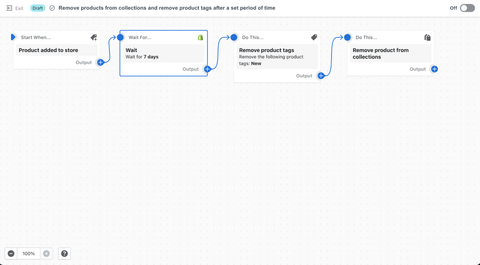The commercial year is coming to a close, but this does not mean that traders' everyday life will be easier, vice versa. For most brands and retailers, the last quarter (Q4) is the busiest and most profitable. Black Fridays, Cyber Mondays and Christmas sales keep retailers busy in last months.
So how can merchants prepare for this busy time and get even better from the supposedly growing sales? We listed a few things you can do to succeed.
Get ready for the season
Many customers feel stressed during the big sales seasons. There are a lot of customers on individual sales campaign days, so there may be a fear of product availability, or during the holidays customers would prefer to use the time for party planning - instead of looking for gifts.
However, your brand has the opportunity to meet the customer's needs and give them a memorable customer experience. So start planning in advance. What products do you want to sell, what kind of campaigns do we use, are the internal processes and personnel at a sufficient level, or do we perhaps have the opportunity to learn something from the previous season. In addition to these, it is good to understand and evaluate market trends, such as the change in purchasing caused by the recession.
Planning and preparation in sufficient time will be key to achieving a successful customer experience.
Data insights and marketing communication
Do you recognize your company's situation and your real customers? There is a huge amount of existing data in your store, so the better you know your situation, the better you will succeed in your goals. Through the Shopify Analytics tool, you can see the most important merchant metrics, such as total sales, conversion rate, best-selling products and returns, and customers. By evaluating different areas and going back to review the successes of last year's seasons, you will be able to get a comprehensive picture of your situation.
With the help of the analyzed data, you can plan the marketing message and future campaigns effectively. By segmenting existing customers into your own audiences, you can create increasingly individualized materials and campaigns for your customers. These segments can be, for example, customers who have not made returns or customers who have bought more than once from your store. It is good to start marketing communication to different segments in advance.

Inventory management
Understanding your inventory is important so you can make smart decisions during the season. Sales seasons and campaign days are an excellent time to optimize inventory. By identifying the most sold and most engaging products, you can profitably prepare for the sales season. At the same time, you have an excellent opportunity to sell your less popular products out of stock. An excellent way to do this can be, for example, product combinations or buy x get y campaigns.
From a technical point of view, preparation for high sales days does not require major considerations in Shopify, unless it is assumed that tens of thousands of people will compete for your products and start payment at the same time.
However, every Shopify merchant should note that Shopify records the product as sold only when the customer has landed on the purchase thank you page.
On days of high sales, there is a risk that the campaign product will be oversold. The product that was ordered as a pick-up from the store no longer exists because it was already sold in the store or in the online store, the same product is purchased at the same time over the stock.
Traders can prepare for this by slightly modifying stock balances in case of overselling and by removing the possibility of selling products when the stock balance is zero. Thus, it is more likely to avoid overselling and a bad customer experience.
Automations&Flows
The season and big discount days are not only valuable in terms of sales. In order to succeed, it is first of all a big investment for the company to acquire customers. However, in online stores, as well as in other businesses, it is most profitable to aim to grow customer loyalty. It is therefore important that traders have built as comprehensive automation as possible and use the right tools, which can be used to build loyal customer relationships from individual customers. So don't let go your customers, serve them! Learn about Shopify Flow and how to build different automations here.
According to research, loyalty programs encourage up to 78% of customers to be more likely to spend more money on the brand. In addition to loyalty programs, with the right measures you can find more specific audiences for whom you can generate added value in the quiet months of the following year and get people buy again. In this case, your customer acquisition costs will decrease, individual people will buy more, and with a higher probability, your return rate will also decrease significantly.





